Produce explained: 9 types of nuts to go nuts for
As we stay home to keep the virus at bay, our grocery lists get longer. And let’s be honest, facing shelves with an endless variation of the one product you want, can be confusing and even intimidating. So, our Produced Explained series is back to solve your woes. In this piece, we zero in on the epitome of healthy snacks in Singapore: nuts.
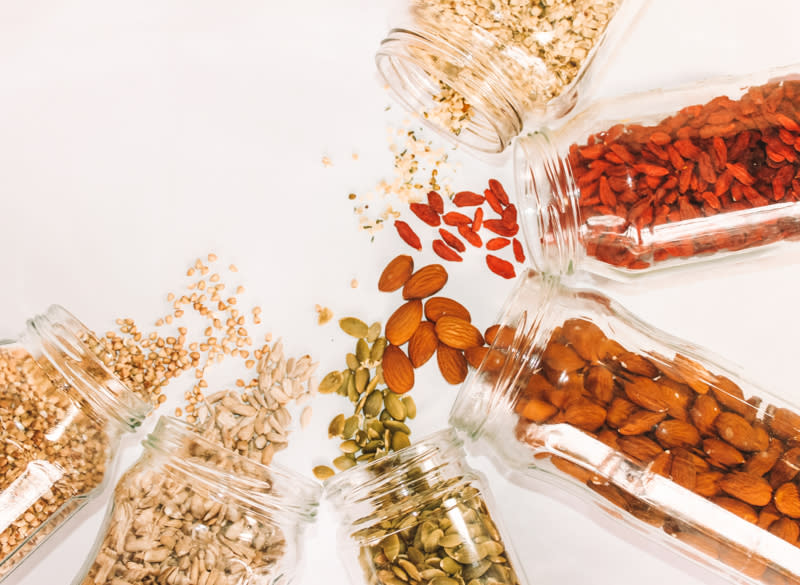
As healthy and sustainable living comes to the fore, our conscience often impels us to switch out bags of potato chips for mixed nuts—the bag of lesser evil. And this explains the burgeoning snacks and nuts stores sprouting up in Singapore. While health enthusiasts and cooks may know each type of nut with the back of their hand, these miniature nuggets may not be discerning to us average consumers.
If you’re looking for a good snack option or ingredients to incorporate into your meals, let’s grab a handful and delve into nine types of culinary nuts you may potentially just go nuts for.
1. Peanuts
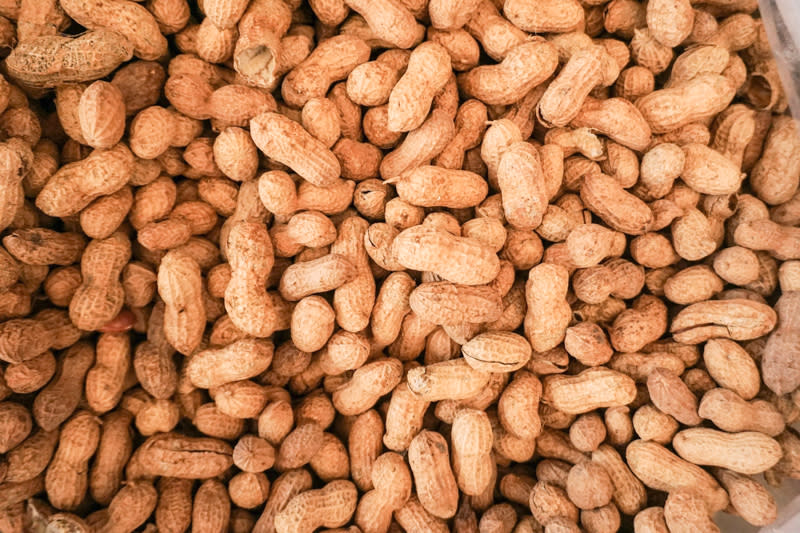
What it is:
Did you know, that, unlike its namesake, the peanut is not a nut by definition? It’s a legume (like peas, lentils, and beans). Its origins are unclear, but today it is widely grown in the tropics and sub-tropics. Peanut seeds vary in shape and colour, from oblong to round, and their papery seed coat ranges from white to dark purple.
Peanut pods, which contain the seeds, grow underground, explaining its epithet, peanut, which means ‘under the earth’.
What makes it unique:
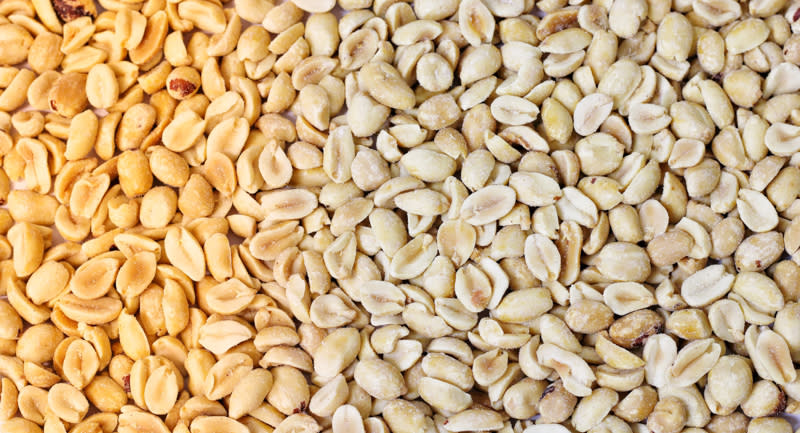
Raw peanuts are imbued with an earthy taste that becomes more prominent when roasted. They are not only high in fat, comprising of mostly mono- and polyunsaturated fatty acids which make them excellent for peanut oil, but also high in protein. Its protein content ranges from 22–30% of its total calories.
What it’s used in:
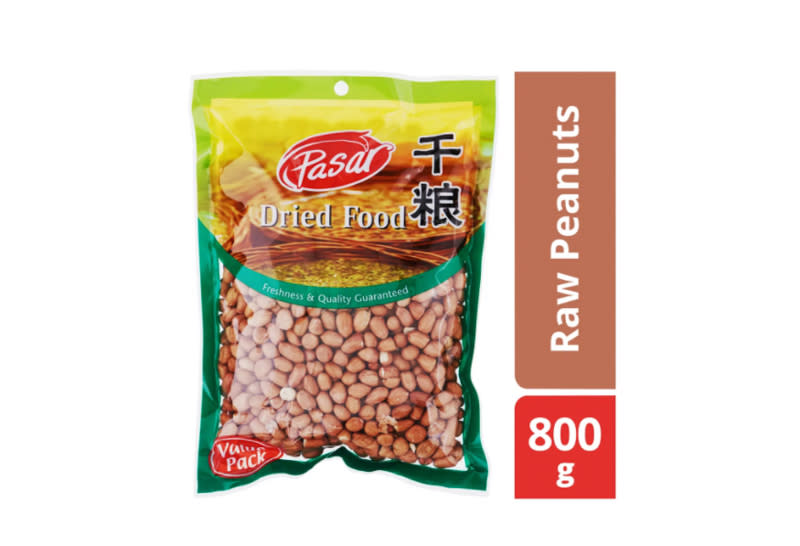
Peanuts are useful in cooking and baking. They can be prepared by dry-roasting, in their shell or shelled in a home oven. Its product, peanut oil, has a mild flavour and is deemed more healthful than saturated oils due to its high monounsaturated content. It is also resistant to rancidity, giving them a long shelf life.
Other than consuming it as a snack, other iterations of this household favourite include peanut butter and peanut flour.
Price: From S$1.35 per packet
2. Almonds

What it is:
The almond is a species of trees native to Iran and surrounding countries. Unlike many nuts, almonds are sold in a few forms—whole, sliced, slivered, and blanched. We are most familiar with its blanched form with a light-beige appearance, and its brown shell.
What makes it unique:
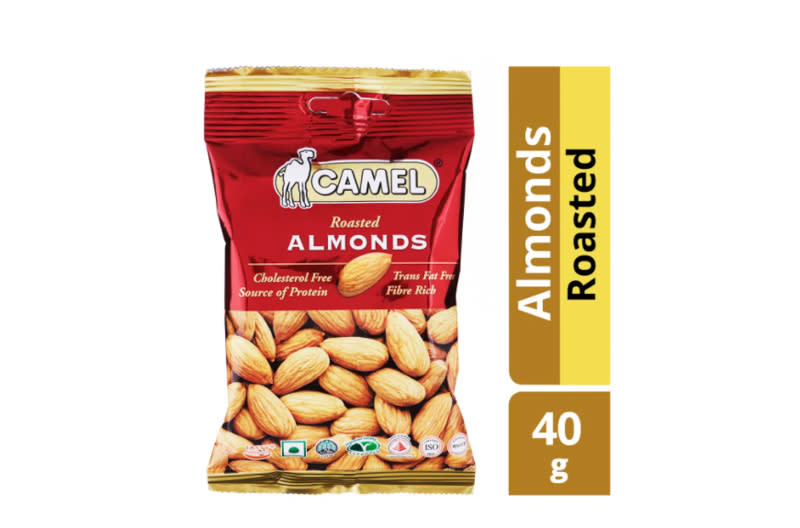
Most almonds have a mildly sweet taste which is accentuated in products like almond extract, almond paste, and marzipan. The almond seed is not a true nut, as its fruit is a drupe which consists of an outer hull (outer coating of seed) and a hard shell with the seed. Its seeds are predominantly sweet, but some trees produce seeds with more bitter notes, a more recessive genetic trait.
Almonds are one of the best Vitamin E sources in the world, a fat-soluble antioxidant that can protect your cells from oxidative damage—a major contributor to ageing. They are also high in magnesium, a mineral involved in more than 300 bodily processes, including blood sugar control and reducing blood pressure.
What it’s used in:
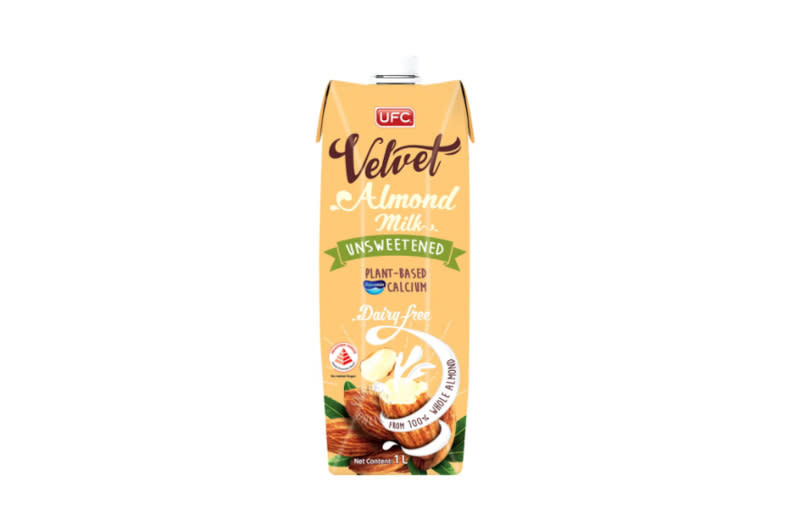
Different forms of almonds are used in cooking and baking. After pulverisation, it becomes almond flour, a popular ingredient in tortes and flourless cakes. For vegans and lactose-intolerant, almond milk is a good substitute for milk.
Combined with almond meal (ground almonds), sugar and honey, it is made into marzipan, a gluten-free alternative to wheat flour. A component in desserts and elegant cakes, it can be rolled into thin sheets and glazed for icing cakes.
Price: From S$1.50 per packet
3. Pistachios
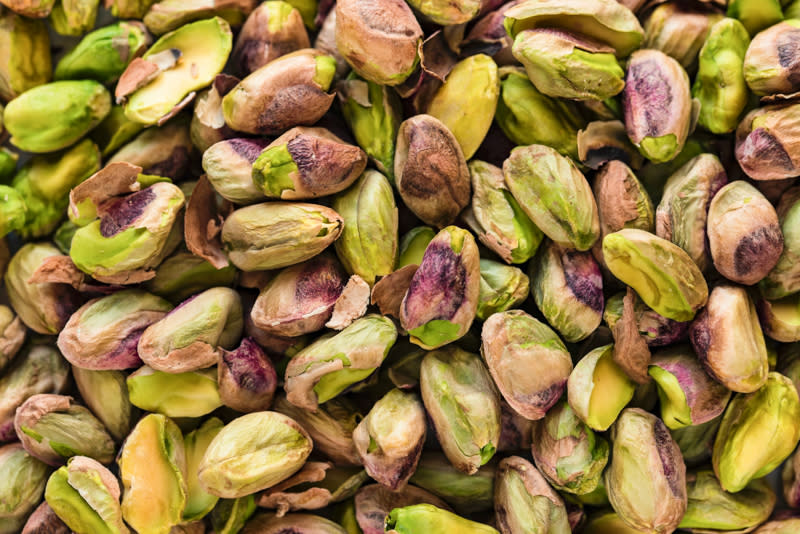
What it is:
One of the oldest flowering nut trees, pistachios originate in the ancient Middle East, Central Asia, and Western Asia. Pistachio shells have a natural beige colour, with green flesh obtained from chlorophyll. However, the pistachio shell is sometimes dyed red or green in commercial pistachios by importers, to hide stains when the seeds were hand-picked.
What makes it unique:
Pistachio kernels (a softer, usually edible part of a nut, seed, or fruit stone) are often eaten whole—fresh, roasted, or salted. The pistachio seed itself has a distinctive nutty flavour. When it’s ready to eat, the seeds are dark-green and oblong, which are then roasted or processed to produce pistachio kernels.
Relative to other tree nuts, pistachios have a lower amount of fat and calories, as one ounce (28 grams) of pistachios contains 159 calories, making it a popular snack option. It contains more anti-oxidants than most other nuts and seeds, ranking third to walnuts and pecans. Furthermore, they contain very important antioxidants for eye health, spotting the highest content of lutein and zeaxanthin among nuts.
What it’s used in:
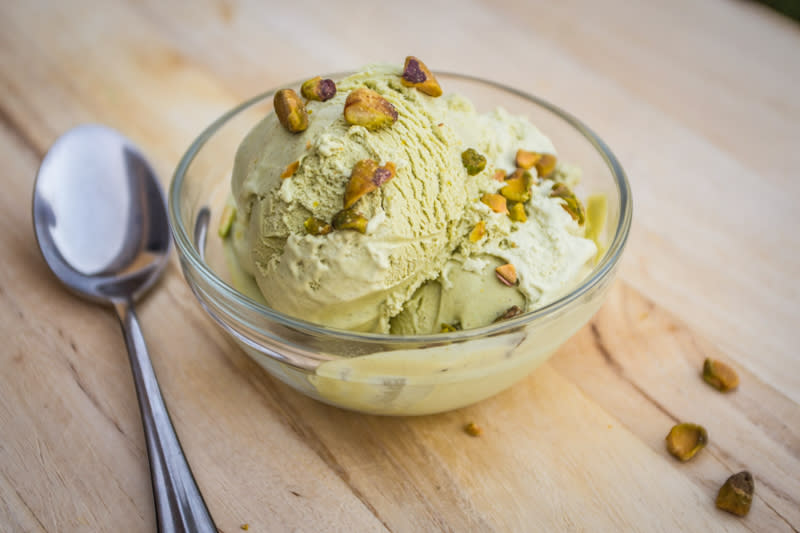
Often a counterpart in desserts and confections, pistachio is a common ingredient in chocolate and pistachio ice cream. It is most well-known in Turkish cuisine, a key ingredient in its traditional dessert baklava. Pistachio is also an element in Indian sweets.
On the savoury side, they are also commonly added to Italian pasta, either chopped and mixed into the pasta or made into a spiced pistachio sauce.
Price: From S$1.35 per packet
4. Walnuts
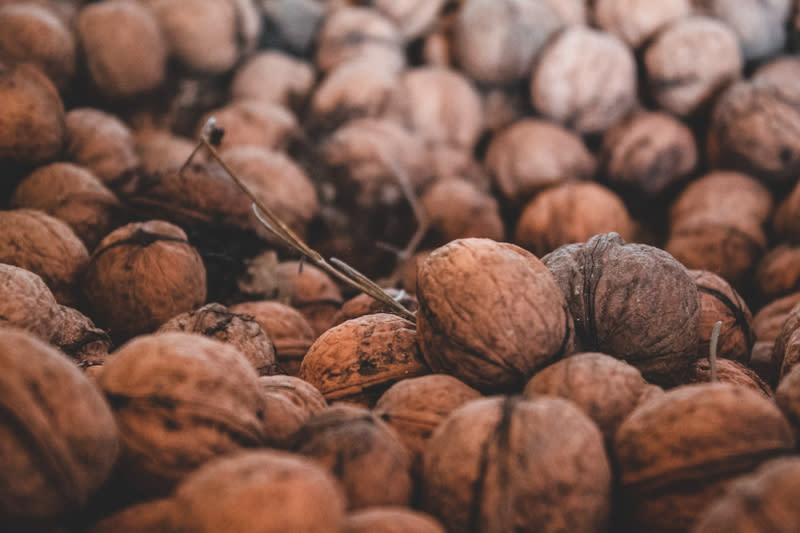
What it is:
The walnut originated in North and South America, southern Europe, Asia, and the West Indies. The nut is round, covered by a reddish-brown, hard wrinkled shell. We consume the English walnut, while the other major species, the Black walnut, is not grown commercially due to its hard shell and poor hulling characteristics.
What makes it unique:
Similar to the almond, the walnut is the edible seed of a drupe, not a true botanical nut. While it is fairly mild, its flavours are complex with some sharp and tangy notes. This astringency makes it a good complement to sweeter flavours of desserts and confections.
Walnuts are nutrient-dense, containing several plant compounds and nutrients like polyphenols which may help decrease inflammation. They also contain a good source of omega-3 fat, which may help reduce heart disease risk.
What it’s used in:

All walnuts can be eaten in their raw, toasted, or pickled forms, and are made into cakes, butters, oils and more. Walnut oil has limited uses for frying due to its low smoke point—the temperature at which an oil starts to burn, which may burn your food more quickly. It is mainly used as a food ingredient, such as salad dressings.
Walnuts are a versatile ingredient, complementing sweet and savoury foods. In desserts, walnuts are a good addition to coffee and banana cake, brownies and pie. In Iranian cuisine, it is a part of poultry or meatball stew.
Price: From S$2.80 per packet
5. Pecans
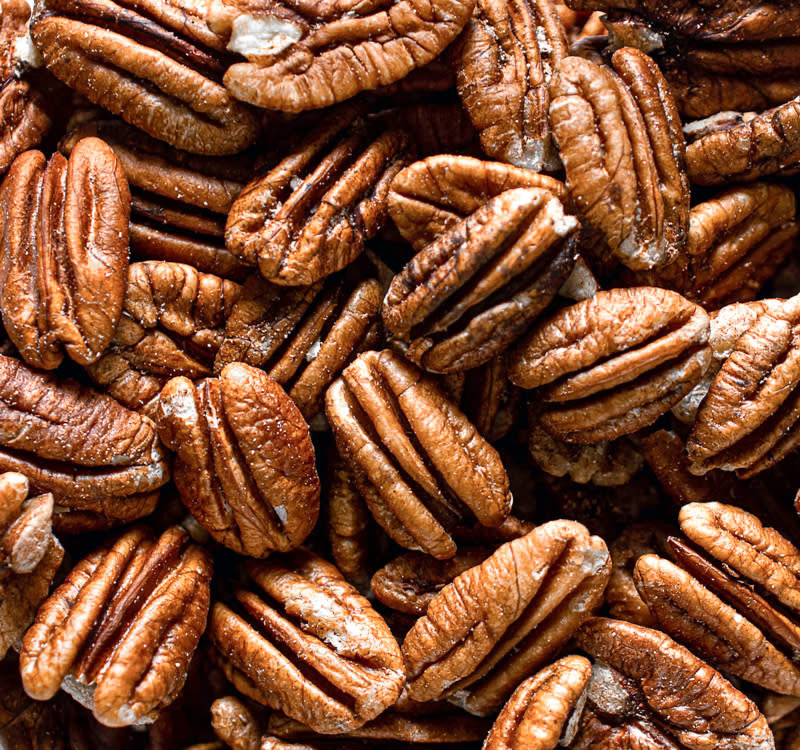
What it is:
The pecan is native to the southern United States and northern Mexico in the region of the Mississippi River. Mexico produces nearly half of the world’s total amount of pecans. Pecans are oblong, with a dark brown shell that is thin and easy to crack.
What makes it unique:

Again, it is not truly a nut but is technically a drupe. Its seeds have a rich, buttery flavour and can be eaten fresh or used in cooking.
Pecans are filled with monounsaturated fatty acids, which is linked to improving total cholesterol levels. They are also stellar sources of manganese and copper, two minerals that boost overall metabolic health. They may also contain anti-inflammatory properties, and potentially help reduce the risk of heart disease.
What it’s used in:
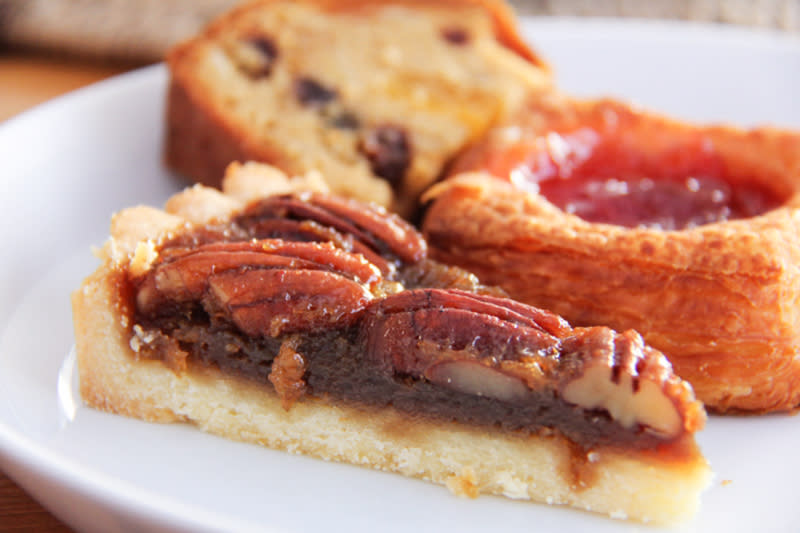
It forms a longstanding part of American culinary history as a familiar ingredient in traditional Southern dishes such as pecan pie. They are also a major ingredient in American praline candy.
Price: From S$4.80 per packet
6. Macadamia
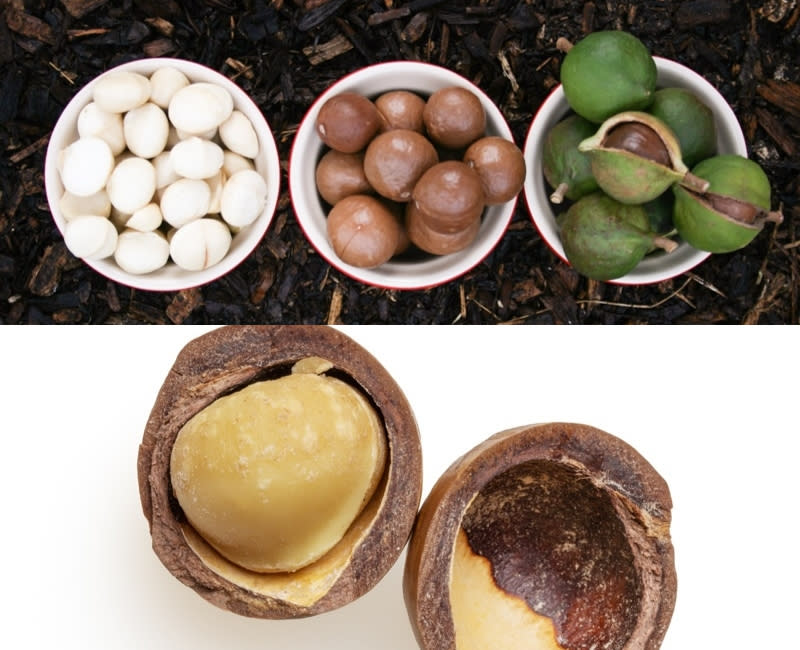
What it is:
Also known by the namesake, Queensland nut and bush nut, the macadamia nut is native to Australia, specifically northeastern New South Wales and central and southeastern Queensland. It was a significant source of bushfood for the Aboriginal peoples, the original inhabitants of the area.
Macadamia nuts are round in shape and light-coloured. Due to its slow harvesting process of seven to ten years, it is pretty costly—topping the charts as the most expensive nut in the world in 2019.
What makes it unique:
Macadamia nuts have a subtle buttery flavour profile. Its natural sweetness and creamy texture can be accentuated by roasting and salting the nuts. Grown in tropical climates, its flavour profile complements lemon, coffee and coconut.
Literally a tough nut to crack, macadamia nuts are sold as their shelled versions. Once the husks are removed from ripe nuts, machinery is used to break open the shells—which requires 300 pounds of pressure per square inch to crack.
Macadamia nuts are rich in monounsaturated fatty acids and contain flavonoids, which convert into antioxidants that help safeguard your body against cellular damage and disease.
What it’s used in:
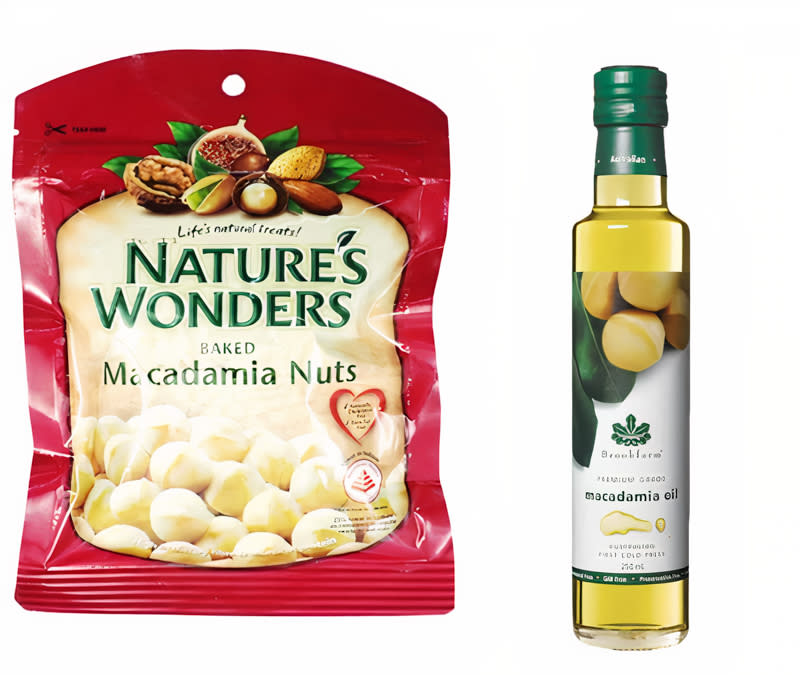
The rich flavour of macadamia nuts makes it a good component in desserts and baked goods, such as pie crusts and cookie dough. In the baking realm, macadamia is a good alternative. Macadamia flour serves as a gluten-free and low carb flour option, while macadamia milk is dairy-free.
Macadamia oil is a non-volatile oil, used as a frying or salad oil, and a healthier oil option for baking, grilling, sautéing, and stir-frying.
Price: From S$4.50 per packet
7. Hazelnuts

What it is:
Hazelnuts are the fruits of the hazel, native to the temperate Northern hemisphere. It has a cream or tan coloured nut, covered in a reddish-brown skin that’s paper-thin, and encased in a smooth shell. Nearly 70% of the world’s hazelnuts come from Turkey. Hazelnuts are versatile in consumption, eaten raw, roasted, or ground into a paste.
What makes it unique:
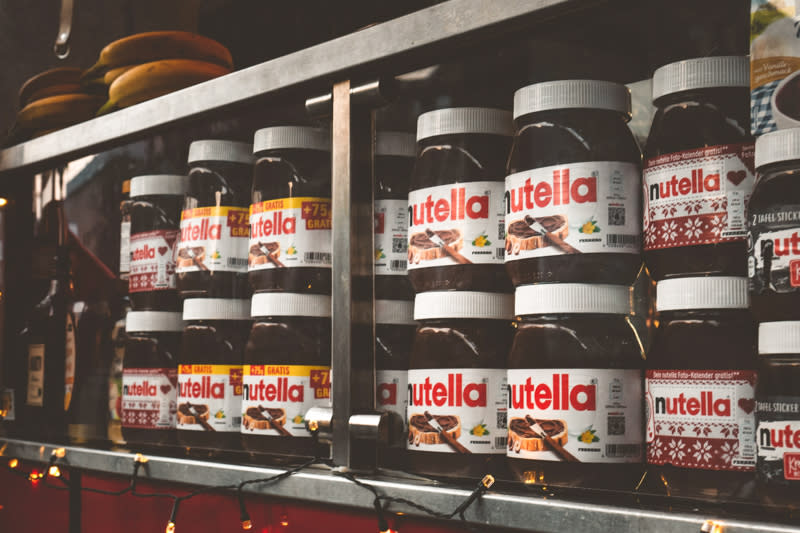
Hazelnuts are naturally sweet, with woodsy and buttery notes. For many of us, Nutella is synonymous with hazelnuts. It’s no wonder that 25% of the global supply of hazelnuts goes to Ferrero SpA, the maker of Nutella and Ferrero Rocher.
Although they are high in calories, hazelnuts are packed with nutrients and healthy fats such as mono- and polyunsaturated fats, which may help prevent and decrease inflammation. They also contain a good amount of omega-6 and omega-9 fatty acids, which confer health benefits throughout our lifespan. Also, to absorb the highest concentration of antioxidants, it’s recommended to eat the hazelnuts whole— so nope, Nutella doesn’t quite cut it.
What it’s used in:

The woodsy notes in hazelnuts coax out the nuttiness of chocolate, thus hazelnut is often an ingredient in chocolate and chocolate-based desserts. Pressed from hazelnuts, hazelnut oil is strongly flavoured and used as a cooking oil. In addition, roasted hazelnuts go incredibly well with salads and soups, giving the dish an added crunch.
Price: From S$3.50 per packet
8. Cashew
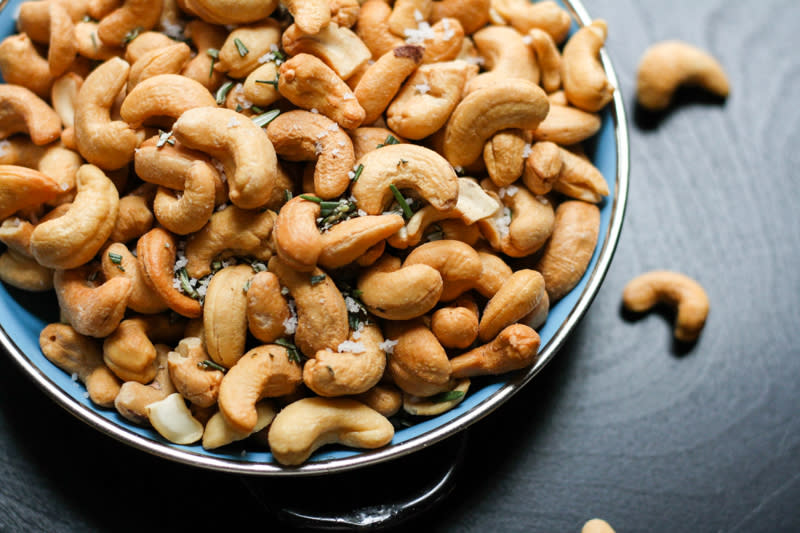
What it is:
First grown in Northeastern Brazil, the cashew tree is a tropical evergreen tree that produces the cashew seed and the cashew apple pseudo fruit. Its seed is the cashew nut we know of, a recognisable kidney-shaped seed that grows on the outside and hangs from the bottom of the cashew apple.
What makes it unique:
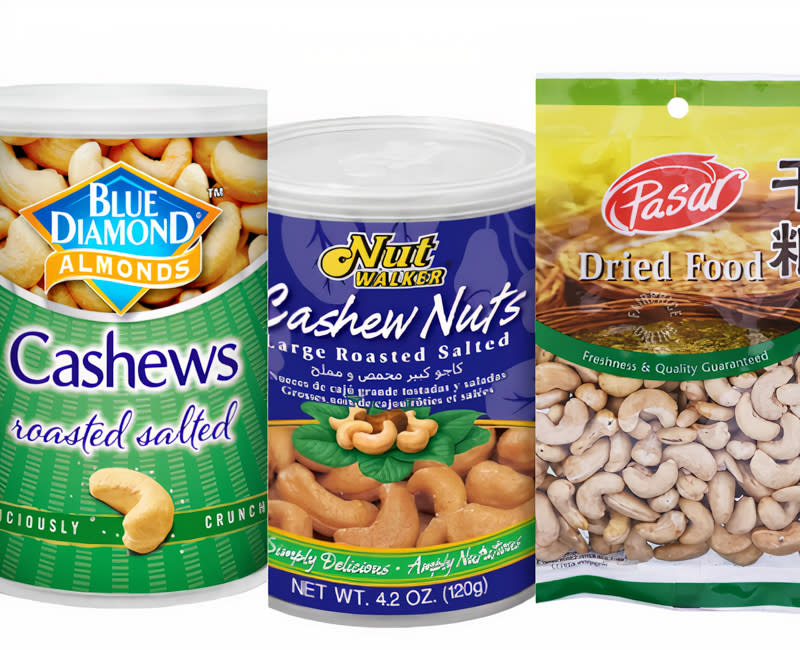
With its neutral taste, it’s a great addition for textual variance in a dish. However, they are inedible until they have been roasted, boiled or streamed and deshelled, to get rid of their toxic oil—a skin irritant.
However, when edible, they are especially rich in unsaturated fats, which may reduce risks of heart disease. They also contain a significant amount of copper—a mineral essential for energy production, healthy brain development, and a strong immune system.
What it’s used in:
Cashew milk is a nutritious alternative to dairy without compromising on taste. Cashews are a malleable ingredient, typically found in South Asian cuisine in its whole, for sweets or curry garnishes, or in a paste—as the base for curry sauces.
Price: From S$5.30 per packet
9. Ginkgo nut
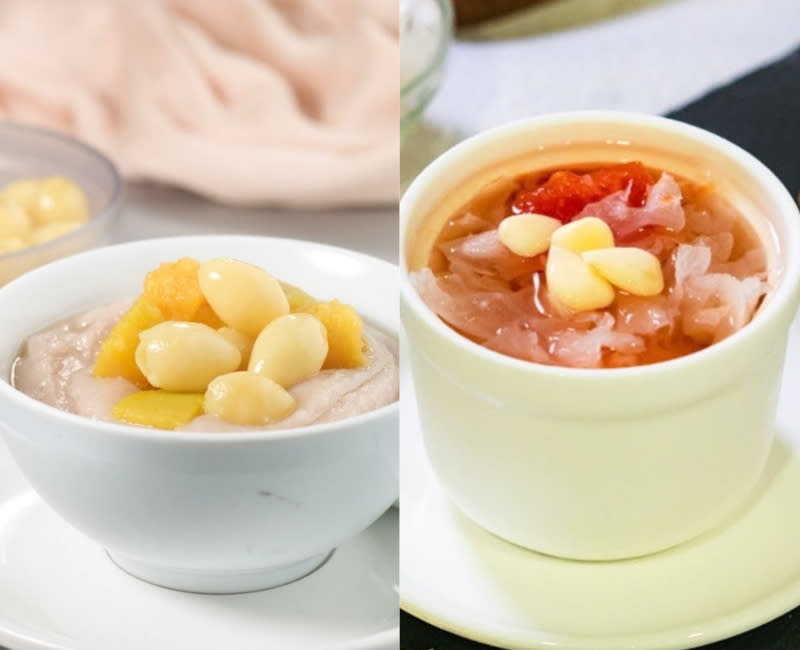
What it is:
Native to China, the ginkgo is also known by the moniker of maidenhair tree, cultivated very early in human history. Beneath its shell is a glossy kernel, which falls in the colour spectrum of amber to bright jade green.
What makes it unique:
When cooked, the nuts have a glossy sheen and a very chewy texture. Because of its status in Buddhism and Confucianism, the ginkgo is also widely planted in Japan since the 14th century, and resultantly, the ginkgo nut is used in Japanese dishes.
What it’s used in:
Ginkgo nuts are a common ingredient in traditional Chinese cuisine and Japanese dishes like chawanmushi. They often appear in Chinese desserts, like the steamed sweet yam paste (orh nee) and white fungus and ginkgo nut dessert soup.
Price: From S$1.99 per packet
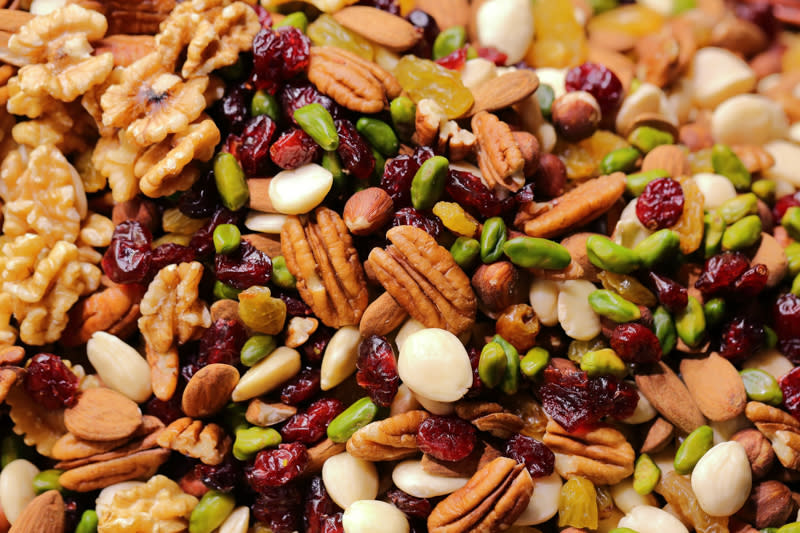
The array of culinary nuts is endless and fascinating, going beyond the few types we spot in our bags of prepackaged mixed nuts. Now that we know more about them, choosing our snacks and bakes becomes a tad easier, and way more fun to explore. Go ahead and fight the midday lull with some crunchy nuts, or channel your inner Nigella Lawson in the kitchen.
Other articles you might like:
Korea, I miss you — how to eat your way back to Seoul in Singapore
6 ice cream deliveries to satiate your sweet tooth
The post Produce explained: 9 types of nuts to go nuts for appeared first on SETHLUI.com.


